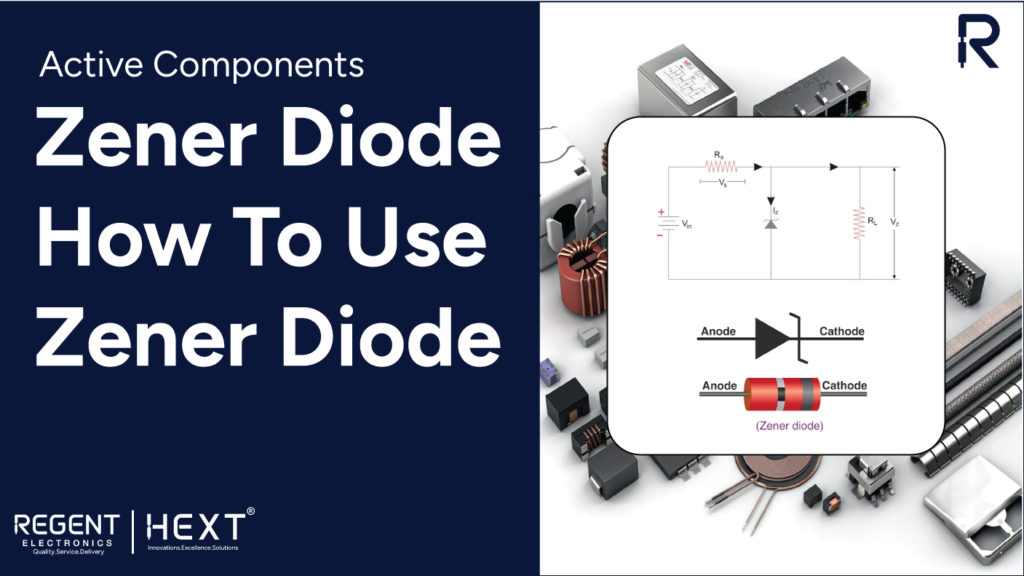
Zener Diode: Understanding its Functions and Applications
Welcome to another insightful blog post by Regent Electronics! In this post, we will dive deep into the fascinating world of Zener diodes, a crucial component in the electronics industry. Whether you’re an electronics enthusiast or an engineer, this guide will provide you with a comprehensive understanding of Zener diodes, their working principle, applications, specifications, and more. Read on to learn all about Zener diodes and how to choose the perfect one for your needs.
What is a Zener Diode?
A Zener diode is a special type of diode that allows current to flow in the reverse direction once the voltage reaches a certain value, called the Zener breakdown voltage. Unlike regular diodes that block current flow in reverse bias, Zener diodes are designed to operate in the breakdown region, making them invaluable for voltage regulation and other specific applications.
Zener diodes are widely used in voltage regulation circuits, surge suppressors, and switching applications due to their ability to maintain a stable voltage. They are specifically engineered to tolerate reverse breakdown without damage, providing reliable performance for a range of electronic devices.
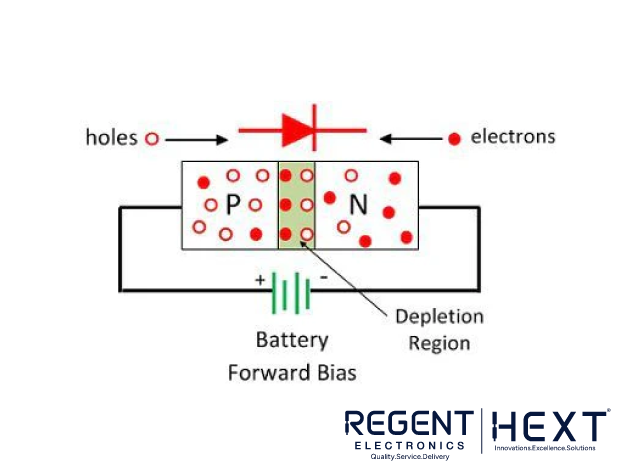
Zener Diode Symbol
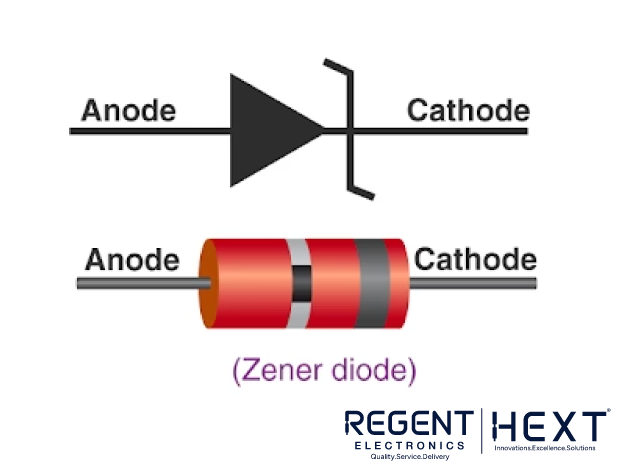
The symbol for a Zener diode is similar to a regular diode, but with additional bent lines to signify its unique reverse breakdown property. The symbol resembles the letter “Z,” which is short for Zener, indicating its specialized function. The Zener diode typically comes in glass encapsulated packages, with a band marking the cathode end for easy identification.
How Does a Zener Diode Work?
A Zener diode behaves similarly to a regular diode when forward biased, allowing current to flow easily in one direction. However, when connected in reverse bias, it initially allows only a small leakage current. As the reverse voltage increases and reaches the Zener voltage (Vz), the diode enters the breakdown region and allows a significant current to pass, stabilizing the voltage across the load.
Breakdown Mechanisms in Zener Diodes:
- Zener Breakdown: Zener breakdown occurs when a strong electric field breaks the covalent bonds in the diode, creating free electrons that flow through the diode. This happens in the Zener breakdown region, typically for diodes with breakdown voltages below 5V.
- Avalanche Breakdown: For diodes with higher breakdown voltages, avalanche breakdown occurs when free electrons collide with other atoms, creating more free electrons and holes, leading to an increase in reverse current. Both breakdowns help stabilize the voltage in the circuit.
Zener Diode V-I Characteristics
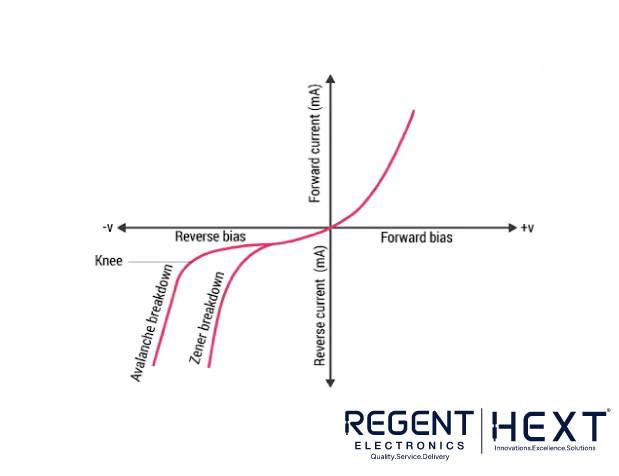
The Voltage-Current (V-I) characteristics of a Zener diode show how it behaves under different voltage conditions. In reverse bias, the diode exhibits minimal current until the voltage reaches the Zener voltage. Once the Zener voltage is surpassed, the current increases rapidly but stabilizes within a wide range of voltages, ensuring consistent voltage regulation.
Key Applications of Zener Diodes
Zener diodes play a vital role in several electronic applications due to their voltage regulation capabilities. Below are some common uses:

- Voltage Regulation: Zener diodes are commonly used as voltage regulators to maintain a constant output voltage across a load, even when the input voltage fluctuates. In this setup, the Zener diode is connected in reverse bias parallel to the load. Once the input voltage exceeds the Zener voltage, the diode starts conducting, keeping the voltage across the load stable.
- Over-voltage Protection: Zener diodes are used to protect circuits from over-voltage conditions. When the input voltage exceeds the Zener voltage, the diode conducts and diverts excess voltage, preventing damage to the circuit.
- Clipping Circuits: Zener diodes are used in clipping circuits to limit the amplitude of an AC signal, either by clipping the positive or negative half of the waveform. This is useful in protecting sensitive components from voltage spikes.
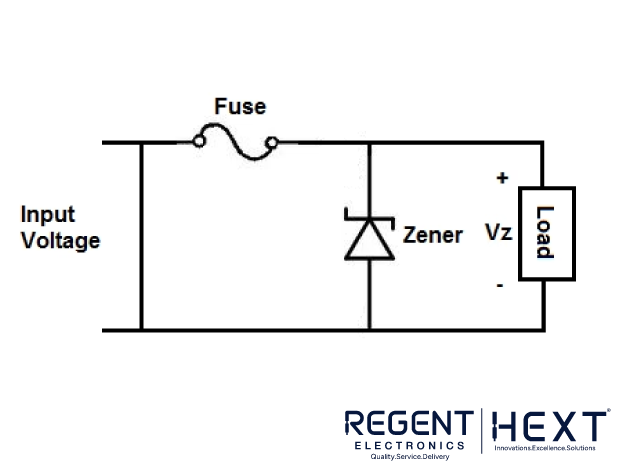
Zener Diode Specifications
When selecting a Zener diode, you need to consider various specifications such as reverse breakdown voltage, current ratings, power dissipation, and more. Here are some important specifications:
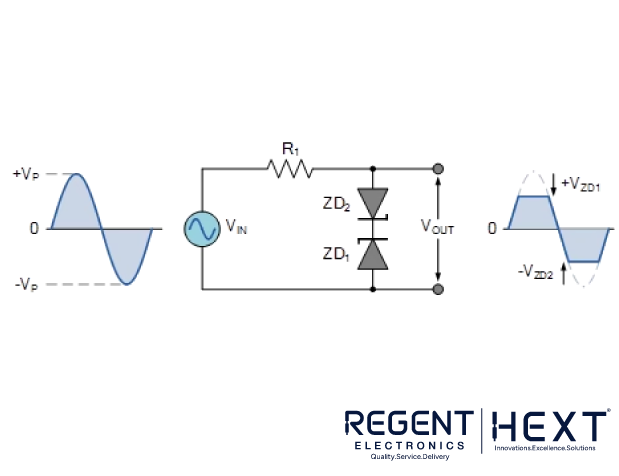
- Zener Voltage (Vz): The reverse breakdown voltage, typically ranging from 2.4V to 200V, and up to 1kV for some models.
- Maximum Reverse Current (Iz max): The maximum current the diode can handle at the Zener voltage, typically between 200 µA to 200 A.
- Power Rating: The maximum power dissipation of the diode, which is calculated as the product of the voltage across the diode and the current flowing through it. Typical ratings include 400mW, 500mW, 1W, and 5W.
- Voltage Tolerance: Typically ±5% tolerance for Zener diodes.
- Zener Resistance (Rz): The small resistance exhibited by the diode during operation, affecting its stability.
Popular Zener Diodes and Their Zener Voltages
Here’s a list of commonly used Zener diodes with their Zener voltage ratings:
| Zener Voltage | Zener Diode Part Number |
| 3.3V | 1N5226 |
| 5.1V | 1N5231 |
| 6.8V | 1N5235 |
| 9.1V | 1N5239 |
| 11.0V | 1N5241 |
| 13.0V | 1N5243 |
| 15.0V | 1N5245 |
How to Choose the Right Zener Diode
When selecting a Zener diode for your project, consider the following factors:
- Zener Voltage (Vz): Choose a diode with a Zener voltage close to the required voltage for your application.
- Power Rating: Ensure the diode can handle the power dissipation of your circuit.
- Current Rating: Make sure the diode can handle the current required for your load without exceeding its maximum rating.
- Package Type: Depending on your circuit design, choose between surface-mount or leaded Zener diodes.
Conclusion
Zener diodes are essential components in modern electronics, offering reliable voltage regulation and protection in a variety of applications. Whether you’re working on power supply circuits, surge protection, or signal clipping, understanding Zener diodes will help you choose the right one for your needs. If you’re looking for quality Zener diodes and other electronic components, Regent Electronics offers a wide selection to meet your project requirements.
Visit our website for more information or to purchase Zener diodes for your next electronics project.
